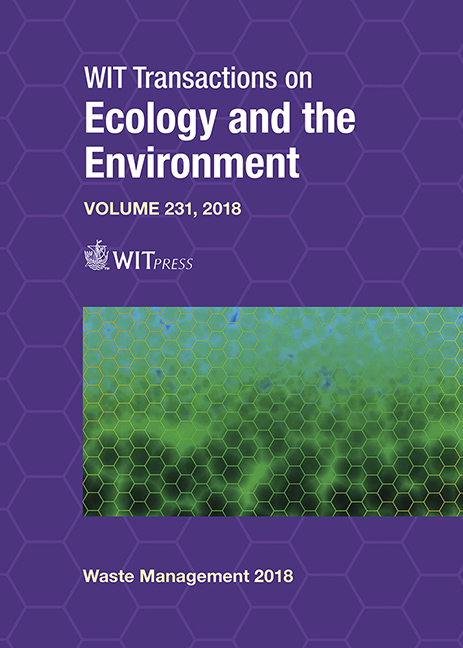CONSTRUCTION AND DEMOLITION WASTE STREAMS FROM THE MATERIAL RECOVERY POINT OF VIEW: A CASE STUDY OF THE SOUTH KARELIA REGION, FINLAND
Price
Free (open access)
Transaction
Volume
231
Pages
11
Page Range
171 - 181
Published
2019
Paper DOI
10.2495/WM180161
Copyright
WIT Press
Author(s)
MIIA LIIKANEN, JOUNI HAVUKAINEN, KAISA GRÖNMAN, MIKA HORTTANAINEN
Abstract
The construction and demolition (C&D) waste industry is a major generator of waste. In the European Union (EU), C&D waste accounts for 25–30% of total waste generation. In Finland, the C&D industry accounted for 14% of all waste generated in the country in 2015. The main components of C&D waste are minerals (e.g. concrete, bricks and ceramics), wood and metals, which offer high potential for material recovery. As a result, the EU has set an ambitious material recovery target for its member states: by 2020, 70% of generated non-hazardous C&D waste shall be reused, recycled or recovered as material in another manner. In 2014, the material recovery rate of C&D waste in Finland was 58%. Further action is therefore needed in order to reach this target. This calls for more accurate monitoring of C&D waste streams and knowledge of the composition of mixed C&D waste. In this study, a closer look is taken at C&D waste streams in the South Karelia region of Finland. The objectives are to quantify regional C&D waste streams, to estimate the composition of C&D waste based on the reported waste streams and to assess the composition of mixed C&D waste based on manually sorted C&D waste samples from the South Karelia region. By achieving these objectives, the regional material recovery potential of C&D waste can be estimated. In 2016, the South Karelia region reported the generation of approximately 165,000 tonnes of C&D waste. This reflects approximately 14% of the total waste generated in the region. The C&D waste generated consisted of mineral waste (34%), metals (32%) and soil (23%). Additionally, the share of mixed C&D waste (6%) as well as wood, glass and plastic (4% combined) was notable. The manually analysed mixed C&D waste samples indicate significant material recovery potential as minerals, wood and plastic made up approximately 70% of the samples.
Keywords
construction and demolition waste, Finland, material recovery, waste management





